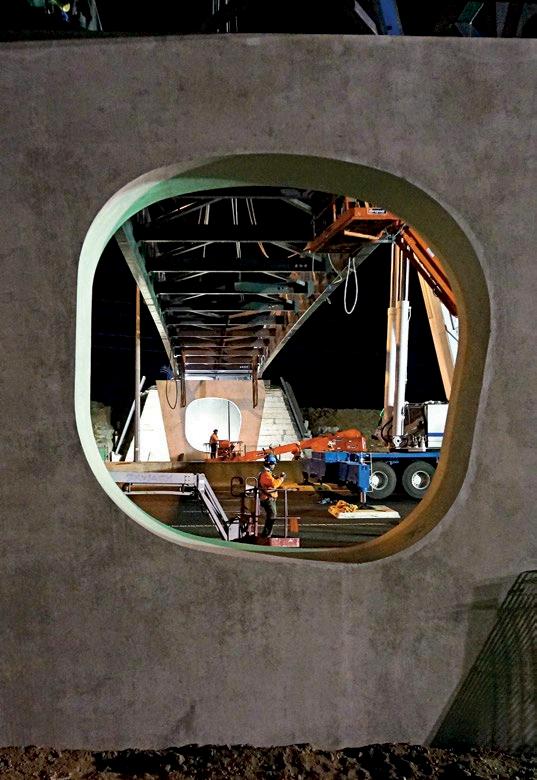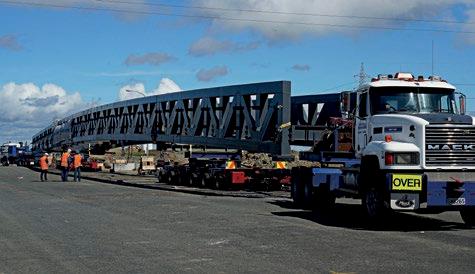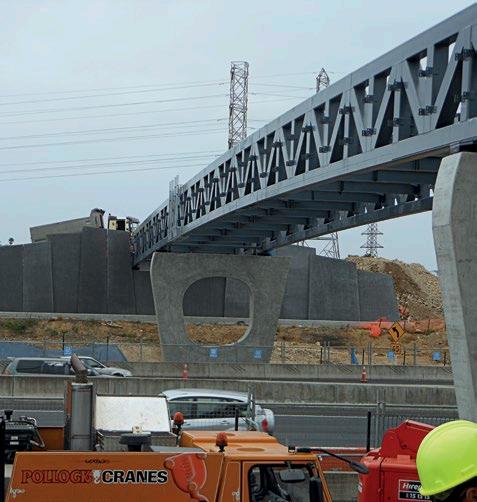
2 minute read
million+ turnover


Advertisement
form of the bridge’s abutment mound and cladding.
Fulton Hogan (Civil North) project engineer Nariman Behzadi says over 400 shop drawings were produced, reviewed and approved for the structural steel work, precast panels and cladding.
Weighing in at 113 tonnes, the central span of the bridge is 48 metres long. The total length of the bridge is nearly twice that, at 80 metres. At six metres wide, there’s more than enough room to swing a cat.
In a nod to the area’s maritime history, the $4.8 million footbridge features a handsome hardwood timber balustrade on both sides. There’s also a concrete deck supported by two attractive concrete piers.
Crossing an incredibly busy stretch of State Highway 20, one of the chief expectations on the project team was to minimise impact on motorway users. Hardly surprising, as the bridge crosses the main route to the airport and Auckland traffic is a flood at the best of times!
Roads had to stay open at all times during construction. The only closure allowed was during the placement of the steel truss. Following six months of careful planning and consultation with stakeholders, the steel truss was lifted by the ultimate in big boys’ toys (a monstrous Grove GMK crane) during a night-time closure of the motorway – this after twice being postponed because of high winds.
Challenges to be worked around included varying ground conditions, a perilously close gas main, scope changes and local fauna – the work site being home to a dotterel habitat. Luckily, the highly challenging technical parts of the project were made easy, says Nariman. This was due in no small part to project team members who had cut their teeth on other major road-related builds.
Finally, but no less importantly, an innovative landscape design was developed to mesh in with the local coastal environment. In keeping with the geography of the region, a volcanic blend of colours, coastal forms and plants was used.
Throughout, collaboration was integral to the success of the project. A ‘culture’ was adopted that saw important stakeholders – notably Auckland Council, the New Zealand Transport Agency, iwi and the local community – kept engaged and fully informed. Project engineer Nariman describes this as “a transparent, open book process”.
Fulton Hogan (Civil North) aimed to achieve zero harm on the project. This was achieved thanks to effective leadership and strict adherence to safety.
Blending seamlessly into the surrounding landscape, there’s no question that the end result is aesthetically pleasing. So much so that the bridge has variously been described as a ‘stand out’ compared with the many cable stay designs that currently pepper Auckland’s motorway network. l










